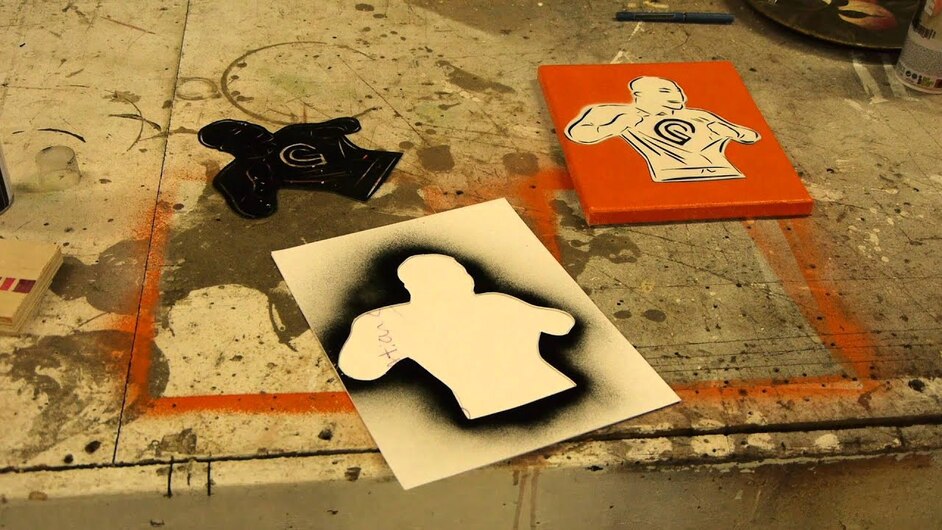That is cool stuff indeed. I particularly want to experiment with things like this on paper, that is, printed design work that combines with laser etching and full cut throughs (with a little bit of foiling to top it all off). Can’t wait to get the GF and start experimenting the heck out of stuff!
@Kusmeroglu remember that wood is basically designed to wick water (Xylem Tissue is how trees drink! I looked it up), and watercolor paint is mostly… well, water.
Acrylic would certainly work better, or enamel, or oil. See if you have a local OneShot! (Sign-Painters Paint) distributer, that stuff is great. The real key to avoid wicking with routed letters (for me, as a sign guy) is to seal the wood first, with something that will be compatible with the paint you want to use. I can only imagine the same is true for laser-etched designs. Clear polyurethane or de-waxed shellac flakes in de-natured alcohol are some go-to pre-paint sealers, or latex house paint and & primer is another great way to deal with wood.
[quote=“Kusmeroglu, post:4, topic:1048”]
It might be cool to not peel away any of the mask and intentionally bleed some colors in
[/quote]Think you could definitely be onto something there!
Taking advantage of the bleed instead of fighting it is hella kung-fu.
The challenge with acrylic paint is that it tends to bridge between the substrate and the mask, so when you remove the mask, it can peel the paint off the substrate too. We’ll have to work on this, because I know there’s a way to make it work - but we haven’t quite sorted it yet.
Barring paint adhesion issues, maybe a light sanding with a brillo pad would be enough to do the trick without roughing up the mask too much?
Maybe try removing the mask when the paint is still wet?
You could also try gouache. It’s like the love child of acrylic and water color paint. Less bleedy and blendy than watercolor and less flexible and stretchy than acrylic. Those are all very technical terms.
Spray paint is another good option, but only a very light coat. Otherwise you’ll have the same peeling problem when removing the mask.
OOOOH, spray paint. Genius!
Removing your mask (or stencil) before the paint is fully dry is a great tip. When using spray paint, letting a fine mist of one color fall onto a field of another not-quite-dry color can lead to some fun results.
Here’s Bob with a speckled blue background:
And this red/black mist on an orange background:
Of course, spray paint comes in a range of flavors. Cheap- and mid-range spraypaint (like store brands, rustoleum, or krylon) are generally going to be enamels, and are pretty low in pigment content (the actual little bits of color mixed in with the propellant and solvents). Stepping up to “fine-art” spray paint will give you a much higher pigment-content, and options like low-pressure & variable pressure caps, acrylic spray, oil-based spray, water-based spray, chalk spray, phosphor, and much more. You will also get better adhesion, quicker dry times, and less drips. My personal favorites are from MTN and Molotow.
Amazing technique @jbv. And thanks for your discretion, as you’re right this is a family friendly board. ; )
Do you have a video of your process? I love what you created.
Thanks, I appreciate that! No videos of the process at the moment, but if it is of interest I would be happy to make one. Will probably have to be after the holidays.
I would love to see it too!
Gee, if only you had something that could… I dunno… cut the connecting paint along the edges of the mask…
/wink
If you have the mask saved as a design in your glowforge (easily done with a quick place and pic before painting), register the material so it places back on properly (ie - align to a corner). Let the paint dry, put it back in the forge on a pretty low setting so that you only cut through the paint…
yes yes yes… assuming the paint is laser safe!
Ok, @mauikennels and and @Kusmeroglu, here you go:
I should have written a script and planned my shots, but oh well. Working fast.
Super-Dan image created by @autumnleedavis and modified by @fan-of-glowforge, and stolen from the mascot thread.
Willing to bet you would like the Mike Lavallee’s Killer Grunge FX masking spray.
I used to use it all the time when I was building ZenTambour drums

Not too sure how well it would work on paper and canvas, but I am sure you work with non-pores surfaces as well.
ooh, that looks neat! How does it do with rattle cans, I wonder?
It seemed to work just fine the few times I had to use a lacquer from a rattle can. So I would think it would work as long as you do “dry” spraying. It’s very cool stuff!
Try Golden High Flow Acrylics over transparent watercolor ground or clear gesso.



